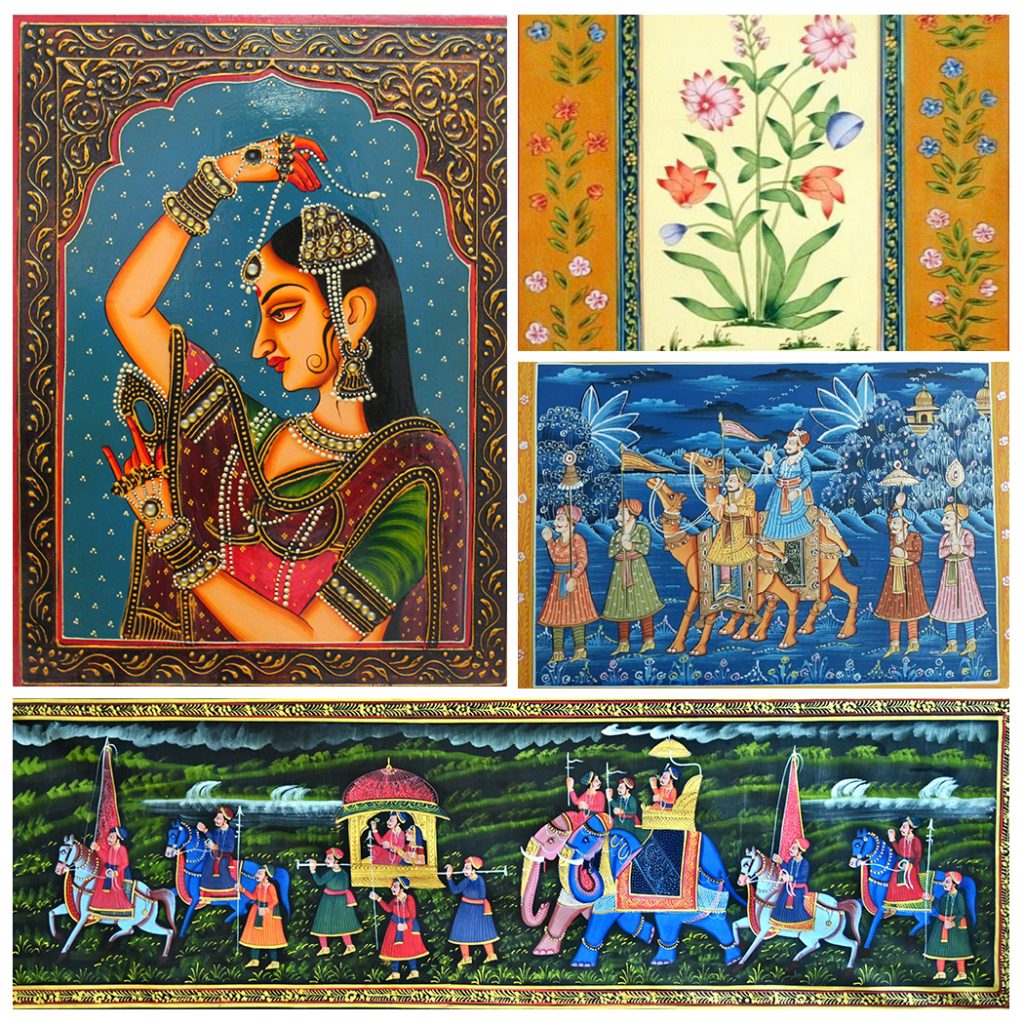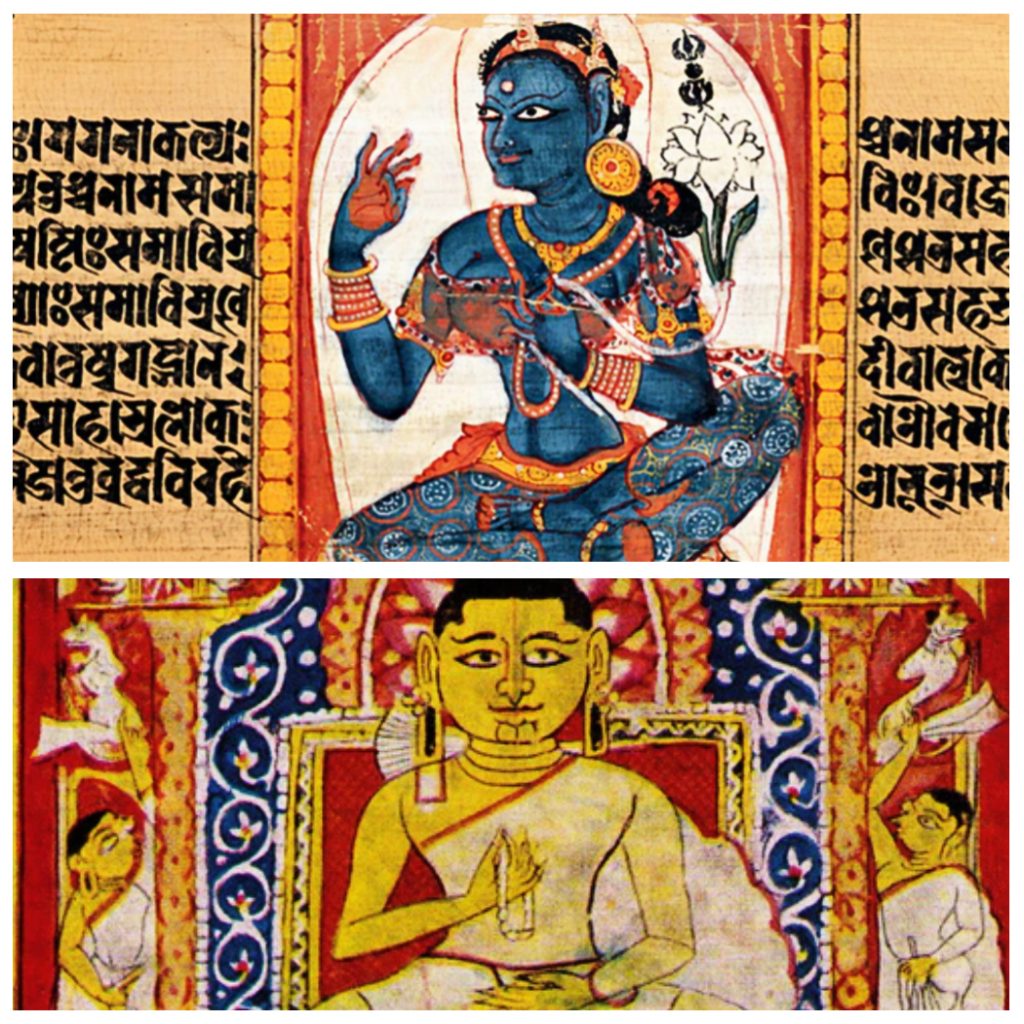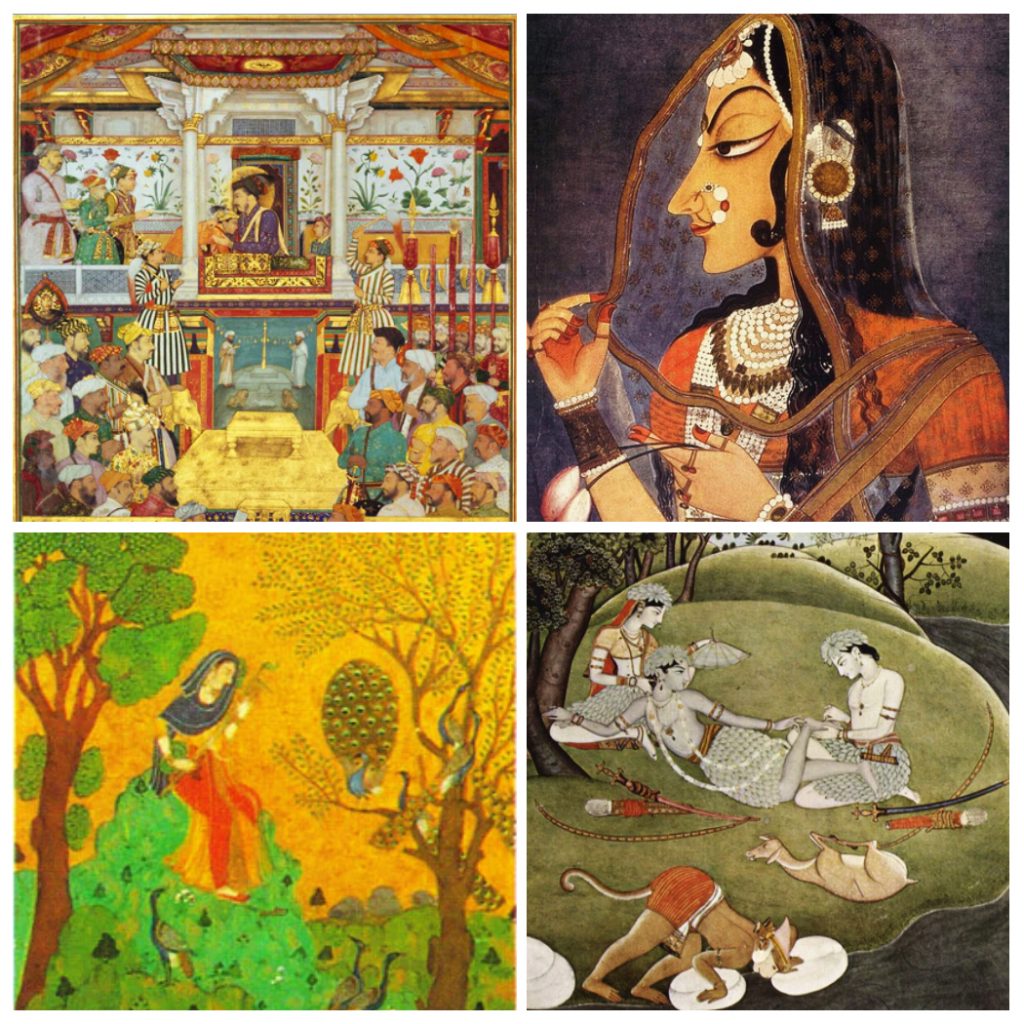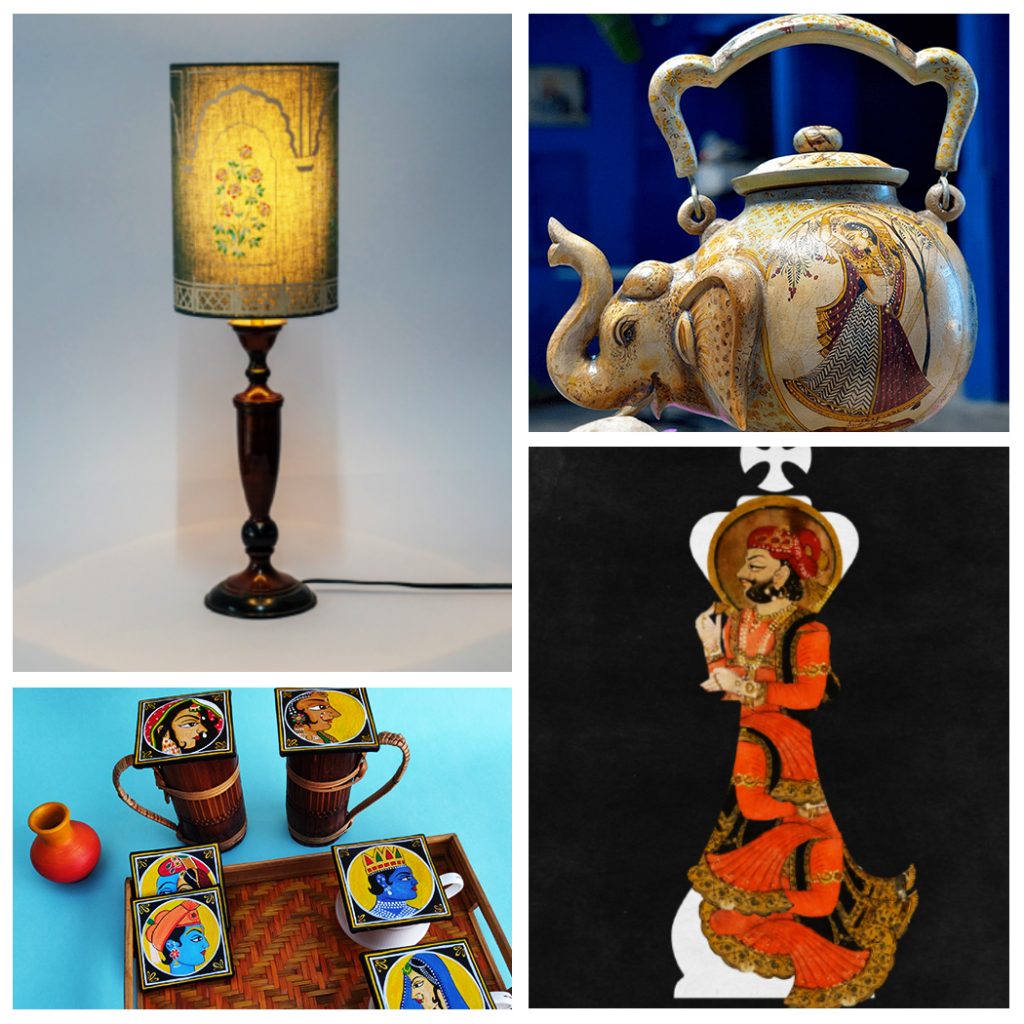Indian Miniature Painting is a traditional form of art that has been practiced in India for centuries. It is a highly skilled and intricate art form that involves creating detailed paintings on a small scale. It is characterised by its use of bright colours, intricate patterns, and elaborate detailing
Characteristics of Indian Miniature Painting

The art form requires a great deal of time and painstaking effort to create. It can be crafted on a variety of materials, including palm leaves, paper, wood, marble, ivory panels, and cloth. One of the most prominent characteristics of this art form is the use of bright, vivid colours. The colours used in Indian Miniature Paintings are made from natural materials like crushed minerals such as stone dust, real gold dust, real silver dust. and plant extracts. When applied in thin layers they create a translucent effect on paper which is also specially polished with stone to create a smooth, non-porous surface. This technique gives the paintings a luminous quality and depth that is truly mesmerising.
Another characteristic of Indian Miniature Painting is its intricate detailing. The paintings are created using fine brushes made from squirrel hair and delicate strokes, which are used to create elaborate patterns and designs. The combination of delicate brushwork, vibrant hues, and graceful forms, ensures each miniature artwork is a masterpiece of fine detail, capturing even the tiniest features of the depicted characters. This level of detailing is what sets them apart from other forms of Indian art.
Indian Miniature Painting is also known for its storytelling. Many of the paintings depict scenes from Indian mythology, culture, history, and daily life. The paintings often depict weddings, festivals, and street scenes. They also incorporate traditional Indian motifs, such as lotus flowers, peacocks, and elephants. The paintings are often accompanied by a narrative that explains the story being depicted.
From afar, Indian Miniature Paintings are strikingly beautiful. However, upon closer inspection, they reveal a world of intricacy and storytelling captured in meticulous detail. This art form serves as a vibrant chronicle of India’s history, scriptures, and daily life throughout the ages.
The History of Indian Miniature Painting

The history of Indian Miniature Paintings dates back to the 7th century AD when the Palas of Bengal patronised miniature painting artists. Buddhist texts and scriptures were illustrated on palm leaf manuscripts using subdued colours and fluid lines. In Western India – miniature painting was inspired by Jainism and prevailed in Rajasthan, Gujarat, and Malwa from the 12th-16th century AD. Jain manuscripts were illustrated with bold physical traits, vigorous lines, and bright colours.
In the 15th century, Persian influence led to the replacement of palm leaves with paper, and hunting scenes and varied facial types and expressions were introduced with rich colour tones such as aquamarine blue and gold. Miniature Art in India thrived under the Mughals, from the 16th-18th century AD. The Mughal style of painting was an amalgamation of religion, culture, and tradition, and Persian styles melded with local Indian art to create a highly detailed, rich art form.
The Mughal emperors Akbar and Jahangir were patrons of miniature art, which documented palace life and the various achievements of royalty. European painting techniques such as shading and perspectives were also introduced at a later stage. Later on – miniature paintings flourished in Rajput courts after Mughal patronage declined during the reign of Aurangzeb. Themes in Rajasthani miniatures were centred around the love story of Radha and Lord Krishna and other mythological stories.
Different Schools of Indian Miniature Painting

Distinct schools of Rajasthani miniature art were established, like the schools of Malwa, Mewar, Marwar, Bundi-Kota, Kishangarh, and Amber. The Pahari style evolved under the patronage of the Rajputs in the mountain regions between Jammu and Himachal Pradesh. It developed as an assimilation of Mughal miniature art and Vaishnavite stories.
The Deccani style of miniature painting was practiced in Bijapur, Ahmednagar, Golkonda, and Hyderabad from the 16th-19th century. It showcased the motifs of Islamic art with the influence of European, Iranian, and Turkish art forms., Deccani miniature paintings showcased illumination and decoration of text from the Holy Quran and the Surahs. Indigenous art forms and romantic elements were later amalgamated into this art form.
The different schools of Indian Miniature Painting are each characterised by their own unique styles and techniques. The most well-known schools include the Mughal, Rajasthani, and Pahari schools. Each of these schools has its own distinct aesthetic, with the Mughal school known for its intricate detailing, the Rajasthani school for its use of bright colours, and the Pahari school for its delicate brushwork.
Today, many beautifully preserved miniature paintings are found in museums and old forts, and the art is still practiced in a few regions in India – sometimes under the patronage of royal families. Though its practice may have waned, miniature art has a distinguished place in history as a chronicler of knowledge passed through the ages.
Contemporary Miniature Art

In modern times, Indian Miniature Painting continues to be popular among art lovers and collectors. The art form has evolved and adapted to changing tastes and styles, with contemporary artists adding their own unique twists to traditional techniques. Today, Indian Miniature Painting is celebrated as a vital part of India’s cultural heritage and a testament to the country’s rich artistic traditions.
